woooow, im planning to get a portrait in a royal style from popartyou soon and now Im really thinking of "hiding" something in there and then look at my family eventually finding the "hidden message" lol
9 Incredible Secrets Hidden in Art Masterpieces
Imagine you’re an art detective, and your task is to explore the mysteries behind the world’s most famous paintings. I’m talking about works from Da Vinci, Michelangelo, Picasso. Grab your magnifying glass as this journey is about to begin.
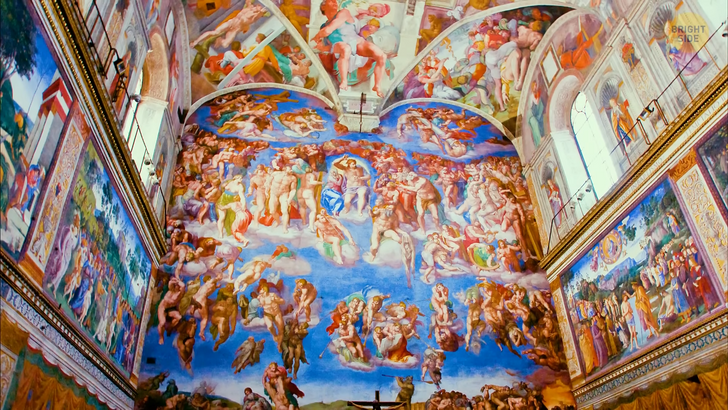
First off on your list is Rome. After enjoying delicious pasta, you head to the Sistine Chapel — home to the world’s most famous ceiling. Oh, and you know how they say Michelangelo painted the frescoes lying down. This is just a myth! Actually, the painter created a complex system of platforms that allowed him to paint standing.
You’re checking out the Creation of Adam: that fresco in the middle. The Italian artist Michelangelo, the author of this masterpiece, was widely known for his study of human anatomy. Art experts argue that the right part of the painting is an anatomically correct depiction of an enlarged brain. To proof-check this, you try overlapping a picture of the organ and the artwork.
It seems to be a match: the cerebellum, the optic nerve, and the pituitary gland are all there. Even the floating green scarf thingy appears to match the vertebral artery. Some researchers think it was Michelangelo’s way of depicting knowledge and wisdom, but you must sleep on it to decide what you think.
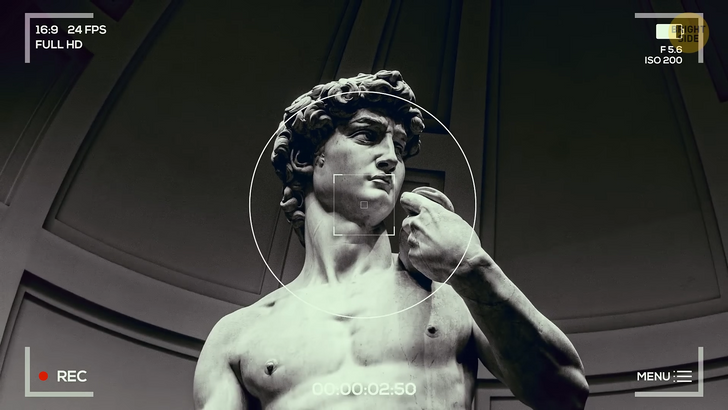
Moving on, you catch a train and arrive in Florence! Time for a quick gelato break, then straight to the Accademia Gallery. One of art’s most celebrated sculptures is waiting for you inside: Michelangelo’s David.
David is a 17 ft tall marble wonder. It was carved for about three years. The mystery surrounding it is to figure out the statue’s true expression. Looking at him from below, you’ll think his face is serene and peaceful. But art historians argue that this work was largely misunderstood. Apparently, his body hides a very different story!
Take a closer look, and you’ll notice his brows are frowning, and the veins in his arms are popping out. That doesn’t look too relaxed, does it? Michelangelo’s idea was to depict David right before an important confrontation, so maybe he wasn’t all that serene after all. Italy is so rich in art, you can’t leave just yet.
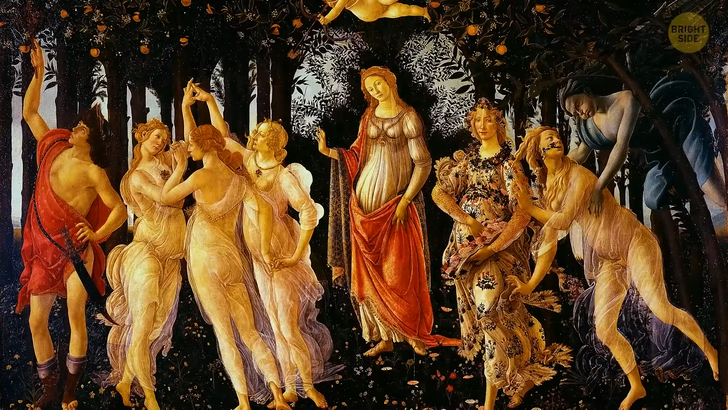
You are still in Florence. You pay a visit to the famous Uffizi Gallery. Many famous paintings are hosted by this museum, but you’re checking out Botticelli’s Primavera... or “Spring”. This artwork is mysterious from the get-go: experts can’t say the exact year it was commissioned. It remained untitled for years until the painter Giorgio Vasari finally came up with a name for it.
Usually, when critics and viewers admire this painting, they focus on the figures in the foreground. But in this case, the actual work lies in that Botticelli painted over 46 different plant species with almost identical precision. And oh, in the painting overall, these plant figures are repeated over 200 times. Unbelievable!
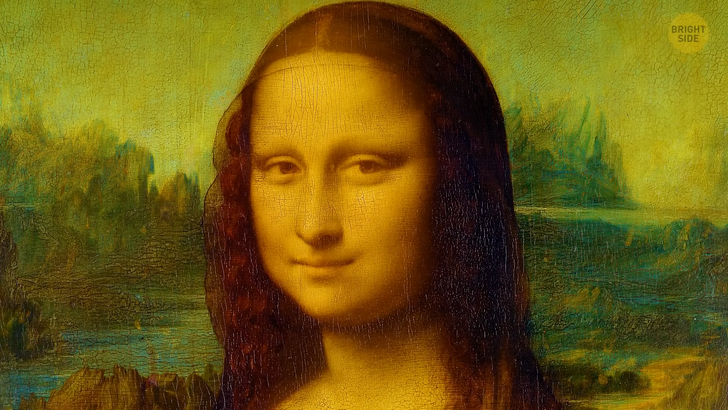
I’d say the last visits were full of impressions, weren’t they? Ready to keep going? A plane ride later, you arrive in Paris! The city of lights, berets, and the famous Mona Lisa! You go through the Museum du Louvre and come to Leonardo da Vinci’s masterpiece: La Gioconda. There are many theories regarding this work of art, and you dive into some of them!
A strong case has been made that the Mona Lisa could be a self-portrait of da Vinci himself. Historians have thoroughly compared da Vinci’s face and that of the Mona Lisa, and guess what. They appear to be strikingly similar. Oh, and then there’s the smirk theory. Dentist and art expert Joseph Bartowski claims to have discovered the secret behind Mona Lisa’s smirk. He says her tight facial expression is a typical indication of someone who lost their front teeth — could it be so?
Also, in 2010 the Italian Committee for Cultural Heritage found a collection of symbols hidden in the painting. These are only visible through highly technological magnifying lenses, but they showed that Leonardo inscribed an LV inside Mona Lisa’s right eye. Experts guess that this is da Vinci’s signature. But the other symbols, a CE in the left eye and a 72 in the arch of the background bridge are still very mysterious. Phew! You covered a lot of ground on this one. Ah, of course, at the end of your visit, remember to test if her eyes really follow you around.
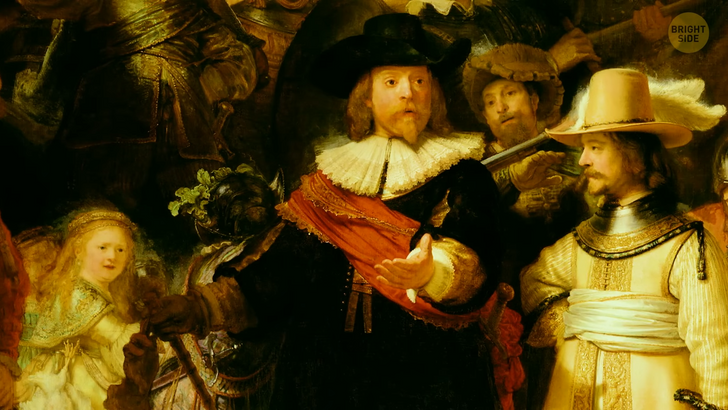
Now, you’re headed to Amsterdam to check out the Rijksmuseum. You came to see a specific Rembrandt painting that hides a mysterious story. The Night Watch is one of Rembrandt’s most famous paintings, but experts argue that the name of the painting and its content are mismatched! Let’s take a closer look. The painting depicts a large group ready to embark on a mission.
Rembrandt’s technique is called chiaroscuro, highlighting the contrast between light and shade. Until 1947, art critics believed the painter was depicting a nighttime scene. But when the painting was cleared of a thick dust layer, it became clear that the scene was happening in broad daylight, with the sun streaming down from the top left. Now, it’s too late to change its name to The Day Watch.
While in Amsterdam, you find a museum dedicated to Van Gogh’s art. Did you know that he painted over 900 paintings during an impressive period of only 10 years? Anyway, the Van Gogh Museum hosts the biggest collection of yellow sunflower paintings you’ll probably see in your life.
Actually, almost all of Van Gogh’s paintings feature dominant yellow shades. This particularity of his art may be a result of how he saw the world. Some art experts have speculated that one of Van Gogh’s remedies changed his color perception, making him see more yellow around him. Ok, so this trip just keeps getting better!
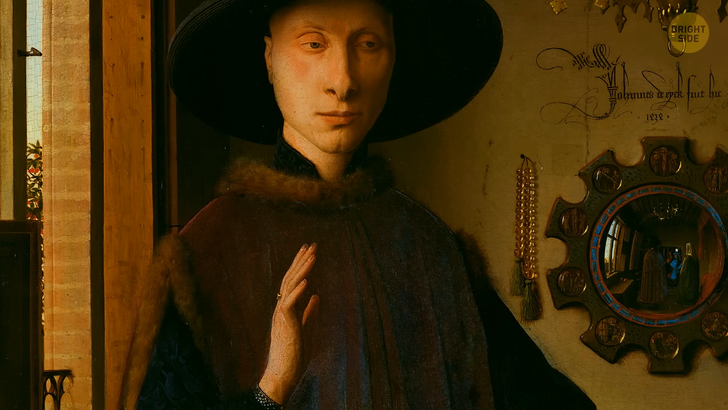
The next stop on your list is the United Kingdom. Then, on to the National Gallery. You may spend hours looking at Jan van Eyck’s painting Arnolfini Portrait and not see anything out of the ordinary. In the foreground, a couple holds hands and stares at the viewer.
But if you zoom in on the mirror on the wall, you’ll see two more people in the room! Art experts say the male figure in the painting has his hands raised to greet these two people seen in the mirror and that one of the figures is Van Eyck himself! Oh, and that’s not the only watermark the painter left. Above the mirror, you’ll see his flamboyant signature: “Jan van Eyck was here. 1434”.
And speaking of people trying to sneak into their art, Caravaggio, the renowned Italian Renaissance painter, left a little Easter egg in one of his famous paintings: Bacchus (ba·kuhs). This one is a bit difficult to spot. In the half-filled jar in the bottom left corner of the painting, there is a tiny self-portrait of the painter himself hidden amongst the liquid.
To see the image clearly, one needs the help of sophisticated technology or at least a very efficient magnifying lens. But it’s there: a male figure, aka Caravaggio, with a brush in his hand. Fun fact: the tiny self-portrait was first noticed in 1922, over 300 years after the painting was completed. It was forgotten due to poor conservation.
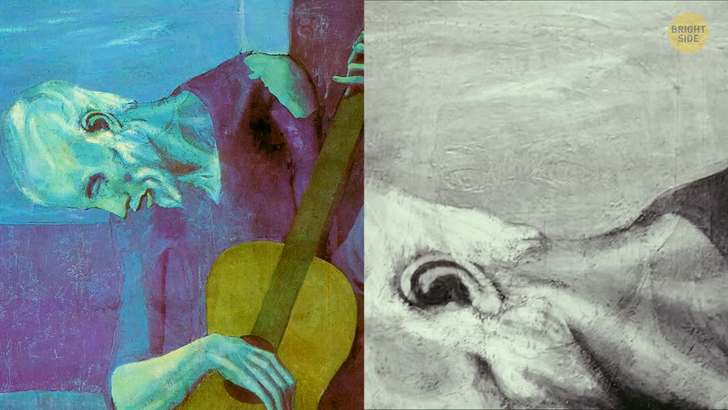
To finish the trip, you fly overseas across the Atlantic, all the way to Chicago! The enormous collection of the Art Institute hosts a well-known painting by Pablo Picasso: The Old Guitarist. This painting’s secret is so well-hidden that it also needs the help of x-ray machines and super fancy technology. But the results are worth it.
The readings show that Picasso painted the Old Guitarist on top of another unfinished painting. We can clearly see the outlines and shapes of a half-drawn female figure that Picasso gave up on mid-work. The emerging artists of the time used that way of saving money quite often, as canvases were expensive. This was quite a tiring world trip, wasn’t it? Get some rest, Sherlock of art!
Comments
Related Reads
30 Uncannily Similar Actors We Always Mix Up

14 Naturally Stunning Mixed Race People

12 People Who Were Shocked After Accidentally Overhearing a Conversation

I Refuse to Pay for My Daughter’s Wedding After She Chose Her Stepdad to Walk Her Down the Aisle

I Ran Away From Our Family Vacation After My Son Gave Me an Insulting Ultimatum

15 True Stories That Could Belong in a David Lynch Movie

10+ True Stories With Endings No One Saw Coming

15 Stories From Housekeepers That Truly Stunned Us

My Stepdaughter Begged Me to Take Her to the Hospital, but I Refused

14 Kids That Could Outsmart Any Stand-Up Comedian

I’m Tired of Being Treated Like a Free Babysitter Just Because I Don’t Have Kids

12 Times When Fashion Blunders Had an Unexpected Twist
